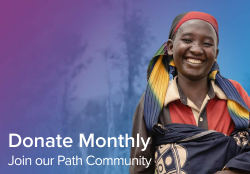Chicagoland
Everyday Advocacy: Simple Actions That Lead to Justice
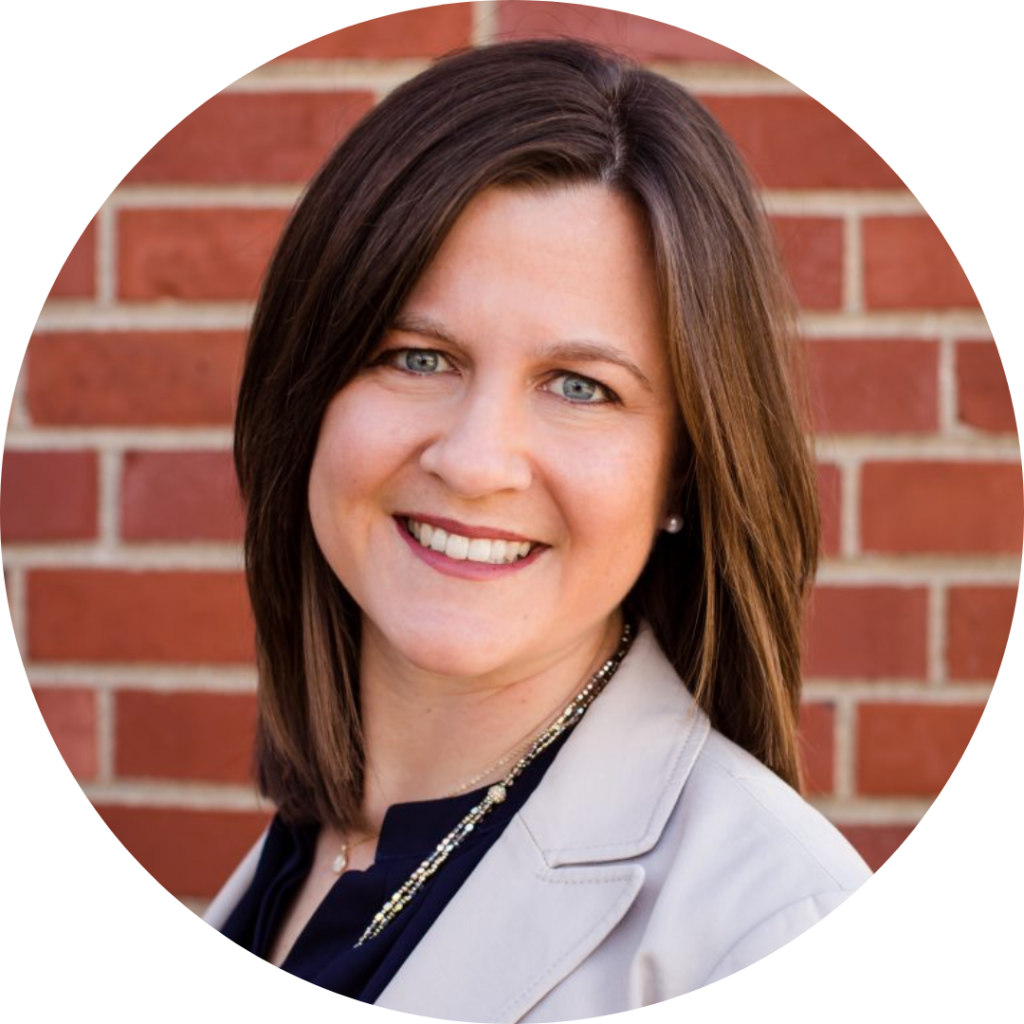
World Relief Chicagoland Executive Director Susan Sperry.
Many define advocacy as acting, speaking, or writing in support of something or someone; often with those in a position to make change – or as we shared in last week’s blog – advocacy is “putting love into action.”
But beyond public advocacy, calling our political representatives, we can practice everyday advocacy: using our voices to intercede on someone else’s behalf.
What is Everyday Advocacy?
Growing up, I never thought of myself as an advocate. In fact, when I thought of “advocacy,” I was intimidated. My earliest calls to elected officials involved a series of starts and stops. I would review my script, think about answers to possible questions, pick up the phone, and pause. I would repeat that cycle before starting to dial. Then I would take a deep breath, pause again, finish dialing, talk as fast as I could, and breathe a sigh of relief after hanging up.
And you know what? It went well, although it was terrifying. But while this type of advocacy is important, it is just one of the many ways we can each use our God-given voice to intercede for immigrants and refugees.
Over time, I’ve learned that advocacy takes many forms. And I have realized that we all advocate, all of the time for the decisions and beliefs that we believe are good.
Yes, advocacy includes speaking to those in authority. But it also looks like helping people navigate complex systems (like healthcare and school), calling the utility company to discuss an unexpected charge on our bill, educating friends and neighbors about immigration systems, and learning about the realities of our country and world through another person’s eyes… and allowing that to shape our actions.
A Biblical Foundation
As I’ve studied the Bible, I’ve learned about many different examples of advocacy. Some people, like Moses and Esther, found themselves in situations where they had the attention of kings. For them, advocacy meant using their positions of influence to speak up and bring freedom and safety for a large group of people. Other biblical figures were more like you and me. We don’t usually have a chance to talk with kings and rulers, but we do get to speak up on matters that impact other people.
The early church was known for standing with the vulnerable and neglected, bringing about healing and freedom, and disrupting systems. A common thread from those stories is the way their actions sprang from belief in God’s love for all people. Early Christians spoke up when they saw situations that did not reflect God’s heart for people to thrive – and this was a pattern throughout church history.
The strongest biblical example of advocacy is found in the person of Jesus, who regularly prayed to God on behalf of his followers and the world. Through Jesus, we see the power of prayers of intercession – of advocacy.
Advocacy Leads to Justice
Advocacy itself is never the goal. Shalom, meaning God-given peace and justice, is the goal. Advocacy is the action, the momentum, that brings about change in hearts and systems and even laws. Hopefully, our advocacy can bring about greater Shalom – justice, freedom, reconciliation, and wholeness. When it does, it reflects God’s ultimate design for relationship between humans and between humans and God.
What Does Everyday Advocacy Look Like?
- Helping a newcomer understand U.S. systems like banks, mail, and schools
- Learning more about local and state laws in an area of your interest, and talking about what you learn with neighbors and friends
- Helping someone access healthcare
- Calling your national, state, or local representatives. Click here to contact your local representatives.
- Talking about the need for more affordable housing with developers, investors, landlords, and anyone in the housing industry
- Telling people in your church or community group about the situations refugees and immigrants face
- Speaking up when you hear and see situations of discrimination or disrespect to others
- Also get creative! There are many ways that your unique abilities can be everyday advocacy.
We All Have Influence
We can choose to use our influence to bring greater justice and wholeness for our neighbors and ourselves. When we do this – whether it’s at work, with our family, at the gym, at church, or volunteering with World Relief – we act justly and serve others in ways that honor God.
Read More of Susan Sperry’s Reflections
Why Christians Should Support the Right to Seek Safety
Becoming a US Citizen Removes a Barrier to Justice.
Celebrating the 4th of July for a naturalized citizen can have a different flavor. It is an indescribable feeling of pride, freedom, and belonging. A naturalized citizen is a person with legal permanent resident status, who has made the choice to become a US citizen. Specifically, he or she has fulfilled the requirements established by Congress in the Immigration and Nationality Act (INA).
Becoming a citizen provides more opportunity and influence. For example, the right to vote and having a voice in the formations of the communities we share. And while citizens are able to contribute in unique ways they also have greater access to support and resources.
The work of guiding immigrants through the citizenship application process is an act of justice. By removing this barrier to influence and resources, we create an environment where everyone benefits and everyone can thrive.
Serving Future US Citizens
The US Department of Justice recognizes World Relief’s Immigration Legal Services department to practice immigration law. Therefore, our trained staff can represent qualified individuals with their applications in front of the US Department of Homeland Security.
Since the 1990s, World Relief Chicagoland has proudly assisted thousands of people to become US citizens. A few years later, in 2005, we began offering group application clinics. We are thankful for the churches that host the clinics and the volunteers who work tirelessly. They inspire us.
World Relief is committed to offering high-quality immigration legal services at a low cost through a wide range of support, including federal, state, and private partnerships. Additionally, we would not be able to do this work without the support of the community of advocates, volunteers, and donors.
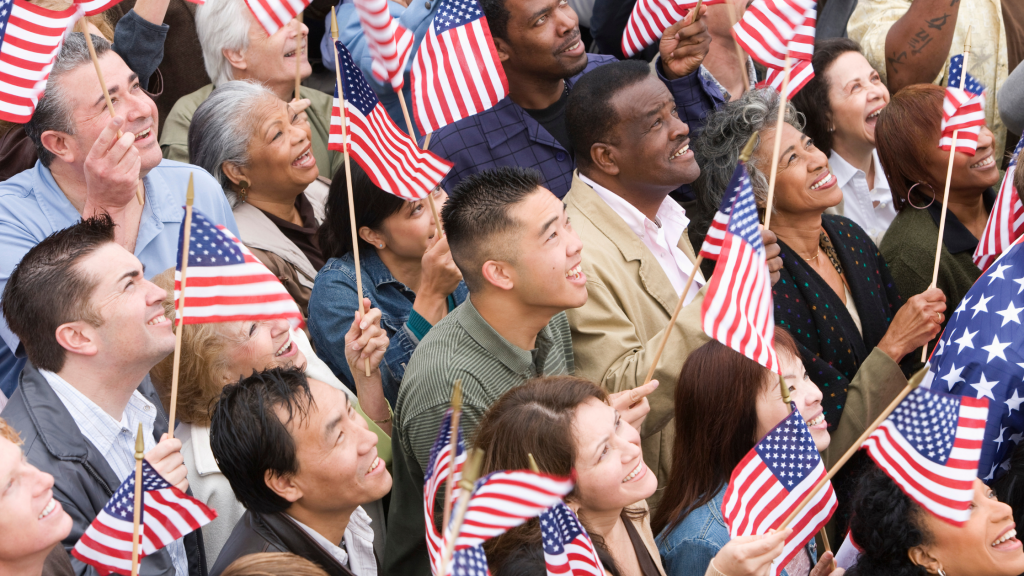
We enjoy witnessing the new sense of excitement and hope in the July 4th celebrations. For new citizens, hanging flags outside their homes, buying 4th of July attire, and attending parades are significant moments. And seeing Independence Day through the eyes of a family that has been reunited, or a refugee who fled persecution is incredibly inspiring. Therefore, we remember July 4th is more than a holiday. It is a day to witness hope and a sense of belonging again in the eyes of people who have persevered.
A Snapshot of the Impact
Through the challenges of the Covid-19 pandemic, the Immigrant Legal Services managed to assist 649 immigrants in becoming naturalized citizens, from 01/2020 to 06/2022. Consequently, these immigrants, including refugees and asylees, became citizens and swore the Oath of Allegiance to the United States. Remarkably, these new American citizens represented 79 countries and a wide range of ages. For instance, 162 were children, the youngest applicant was 5 years old, and our oldest applicant was 83 years old. And, of the total population, 52% were women.
How You Can Help
As with many areas of justice for refugees and other immigrants, the need is often greater than our own capacity. However, we know you are committed to fighting that good fight to become a welcoming community. Therefore, becoming a trained volunteer to serve in Citizenship Clinics or supporting the work of World Relief through joining the Path, is a great next step. In conclusion, we can help remove the barriers that many refugees and immigrants face to finding the unique belonging of being a US Citizen.
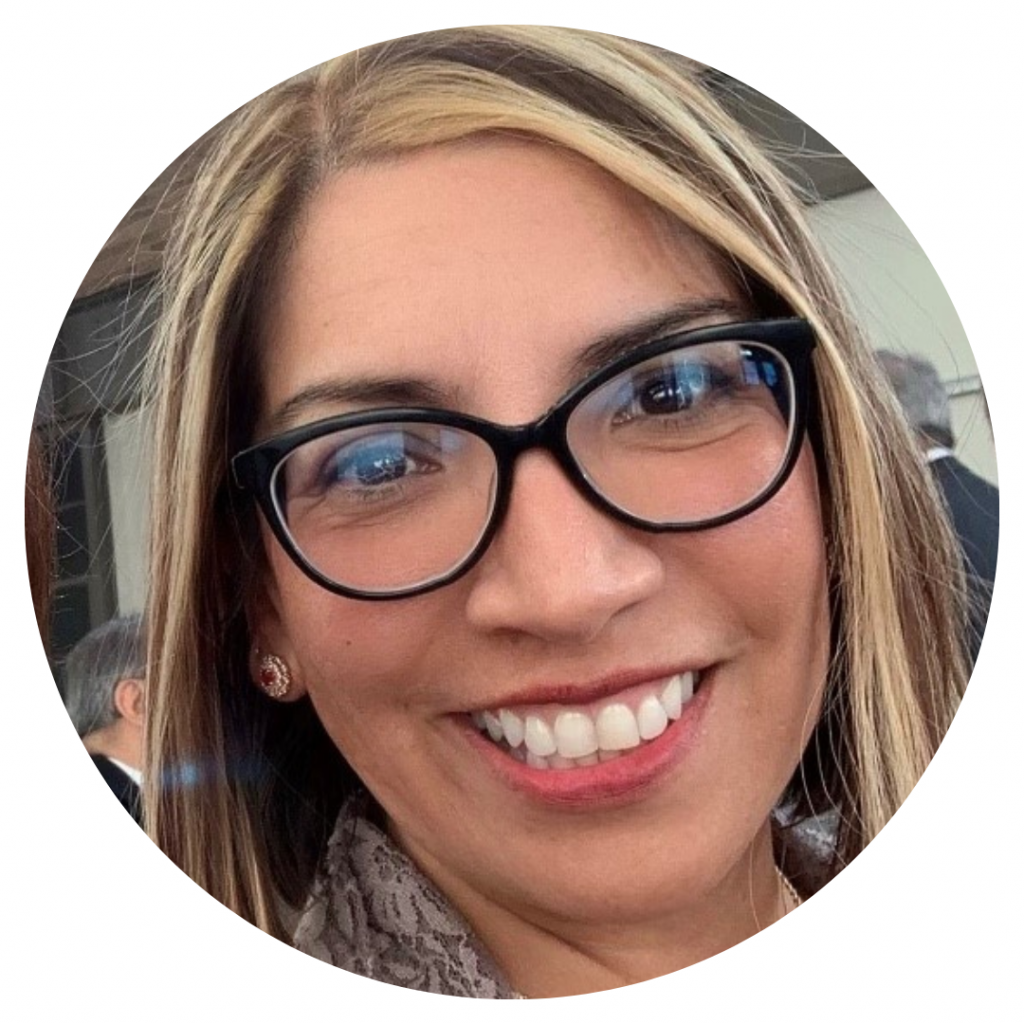
Susan Sosa Bachmeier is the Senior Immigrant Legal Services Specialist for World Relief Chicagoland, Aurora office. She provides direct legal counsel and representation to refugees, asylees, and immigrants seeking administrative benefits, including family reunifications, adjustment of status (green card), and naturalization. Susan is fully accredited to represent clients before the Department of Homeland Security, Department of State, and Department of Justice.
She started her career at World Relief in 2006 as an intern. Additionally, she proudly became a U.S. citizen in 2015. Susan serves her community as a Commissioner for the Human Relations Commission of the City of Aurora. She is an immigrant herself, born and raised in Callao, Peru. Additionally, Susan has a bachelor’s in Sociology from Aurora University and a Certificate in Homeland Security from the College of DuPage.
Read More
María’s Story: Letter from a New U.S. Citizen
Building a Community of Safety and Belonging
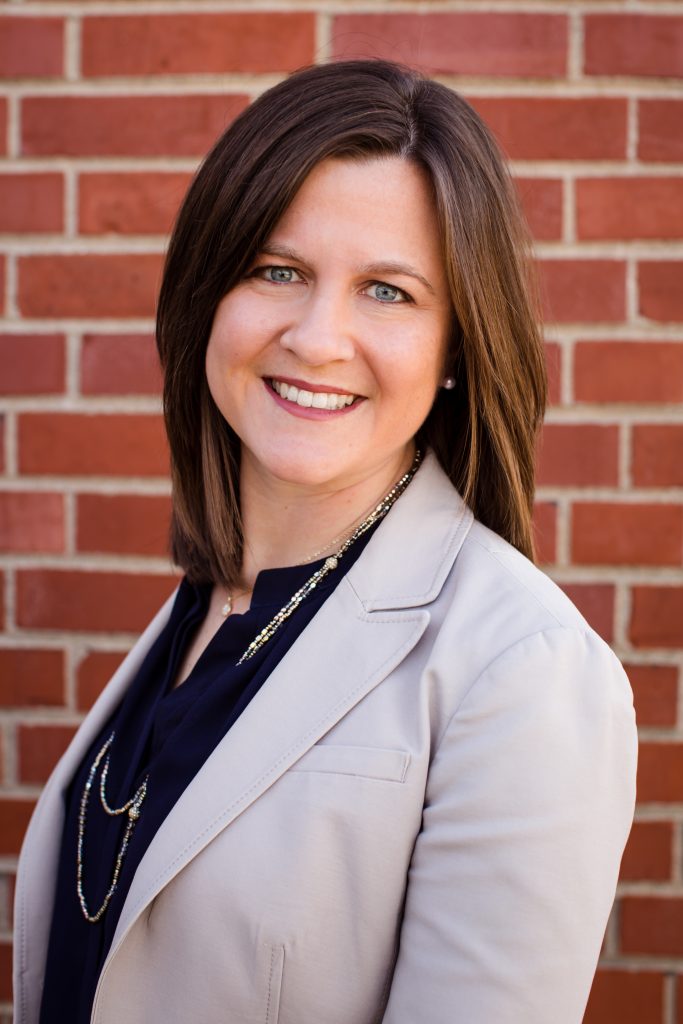
A reflection from World Relief Chicagoland Executive Director Susan Sperry.
June is World Refugee Awareness Month. And on June 20th, we celebrate World Refugee Day. This year, the theme of World Refugee Day is focused on the human right to seek safety.
Whoever they are, people forced to flee should be treated with dignity. Anyone can seek protection, regardless of who they are or what they believe. It is non-negotiable: seeking safety is a human right.
Wherever they come from, people forced to flee should be welcomed. Refugees come from all over the globe. To get out of harm’s way, they might take a plane, a boat, or travel on foot. What remains universal is the right to seek safety.
Whenever people are forced to flee, they have a right to be protected. Whatever the threat – war, violence, persecution – everyone deserves protection. Everyone has a right to be safe.
UNHCR
Who are the people seeking safety?
This is a time of visible conflicts. You might think of Ukraine. There are millions of others who have fled their homes due to less-publicized conflict in places like Ethiopia, Myanmar, or South Sudan. Many of these people become refugees. And during Refugee Awareness Month, it is important that we tell their stories of leaving home to seek refuge.
And yet there are others too – people who arrive in the United States seeking protection from violence because of their identity, religion, or views.
June is National Immigrant Heritage Month, so we also have the time to consider our immigrant neighbors who left beloved homelands, friends, and family…to seek safety and a place to live freely.
This month, I am reflecting on the key reason why both refugees and immigrants must have the right to seek safety: each one is a human being. Those of us who follow Jesus believe in the concept of the “Imago Dei”: that each person is made in the “Image of God.” Let’s explore a few reasons why that makes such an impact on how we treat our immigrant and refugee neighbors.
1. Remembering the Imago Dei Transforms Our Relationships from 2D to 3D
I recently had a conversation with a pastor about what it means to cultivate deep relationships. This pastor framed the conversation as taking a relationship from two dimensions (2D) to three dimensions (3D). By necessity, all of us have “2D” relationships. There are people we know of and we know about, but we don’t know in-depth. We know their outer image, but it’s more of a caricature. We may not think of them as a complex individual with the same level of joy, pain, and experience that we have.
A person becomes “3D” when we spend time together. By talking, laughing, eating, and being human together, we gain insight into their joys, pains, dreams, and fears. When we share life together, we become better able to see the image of God in the person before us and also recognize it within ourselves.
That’s also how we begin to understand each other’s potential. We recognize their capacity to love, create, and build relationships — and that those are qualities we share by virtue of being humans, created in the image of God.
Relationships that move from 2D to 3D begin the process of building community. And in community, where we recognize each other’s humanity, potential, and limitations, we can create safety and space for each other to thrive.
2. Developing Relationships and Belonging Requires Time
In more than 20 years with World Relief, I have seen thousands of people resettled and thousands more immigrants become a part of the World Relief community in Chicagoland. And I have experienced the many ways that being together in community is rewarding and transformative for all involved. In my friendships with immigrants and refugees like Deborah, Jerome, Mohammad, Durmomo, and many others, I have gained an appreciation for the way that the image of God manifests in the creativity, wisdom, and compassion of those around me. Keep an eye out for an upcoming blog series from my friend Durmomo about this!
In each of these friendships, investing time with each other has transformed a 2D image in my head into a 3D understanding in my heart. I am deeply grateful for how these relationships and how we continue to shape each other.
3. Our Value as Humans Gives us the Right to Seek Safety
Christianity, and many other faiths, emphasize the fact that human life is precious. This common thread across cultures is backed up in the theological belief of Christians, that humans created by God and loved by Him, are valuable and important. When someone’s life is threatened, they should have the right to seek safety so that they can experience peace, a relationship with God and others, and the opportunity to use their God-given talents and passions. As Christians, we can protect that opportunity by creating a welcoming space.
I believe that together, we can form a movement to serve the vulnerable people among us. That includes extending safety to refugees and immigrants who have fled war, violence, and persecution and allows us to see the value in every human life. We welcome them. Whoever they are, wherever they come from, and whenever they arrive.
Continue reading:
Ali’s Story: A Refugee Pharmacist Using His Career to Give Back to Others
Finally, I’m Home: Raphael’s Story of 8 Years Waiting for Resettlement
20 Ways to Learn More About Refugees
Around the world, 103 million people have been forcibly displaced from their homes — the highest number in recorded history. Of those, 32.5 million are considered refugees, having fled across an international border due to war, violence, conflict or persecution.
That’s millions of mothers and fathers, daughters and sons, teachers, doctors and friends — each created in the image of God — with full lives and identities long before they became refugees.
As we enter World Refugee Awareness Month and look toward World Refugee Day on June 20th, we’ve compiled a list of books, podcasts, videos and more to help answer your questions about refugees. As you engage with and share these resources, we hope you’ll be inspired to join us in creating a world where everyone can thrive.
READ
Some advocates have described Jesus as a refugee. But was he really? World Relief CEO Myal Greene tackles that question and how the answer should shape the Christian response to refugees and other vulnerable immigrants.
Blog: Drivers of Mass Displacement
People are displaced from their homes for myriad reasons, including persecution, conflict, violence, human rights violations and climate-related factors. World Relief’s Lydia Dawson explains the drivers of mass displacement and how World Relief is responding globally.
Blog: Worth the Wait: A Story of Faith, Perseverance and Love, Despite the Odds
For seven years, Congolese refugees (and newlyweds!) Mbimbi and Goreth didn’t know if they would ever see each other again. Read their story to learn more about the challenges and uncertainties that many refugees face as they rebuild.
Book: Inalienable: How Marginalized Kingdom Voices Can Help Save the American Church
U.S. churches are at a critical crossroads — blurred lines between discipleship and partisanship have compromised our witness and confused our national and individual responses to refugees and “the stranger.” In their book, pastor Eric Costanzo, missiologist Daniel Yang and World Relief’s Matthew Soerens find hope in the witness of global Christians, the poor and the ancient church.
Book: Beyond Welcome: Centering Immigrants in Our Christian Response to Immigration
Karen González invites Christians passionate about serving immigrants to explore how we can create welcoming communities that put our immigrant neighbors at the center of the conversation.
Book: Everything Sad is Untrue: (a true story)
Following his mother’s vocal embrace of Christianity, Daniel Nayeri, his mother and his sister were forced to flee Iran. In this memoir, he retells the tales of his family’s history from his perspective as a misfit middle schooler in Oklahoma.
Book: The Girl Who Smiled Beads
When Clementine was six years old, she and her 15-year-old sister, Clair, fled the massacre that was happening in their home country of Rwanda. In this riveting memoir, Clementine tells their story of rebuilding and reclaiming life on their own terms.
LISTEN
This World Relief mini-series offers a global and a biblical perspective on the subjects of immigration, mass displacement and refugee resettlement, diving into current policies and practices and sharing stories of our collective human experience.
This six-part series traces the U.S. refugee resettlement journey through the eyes of those directly experiencing it. Follow along as each episode brings the listener into the daily lives of refugees adjusting to life in the U.S.
Podcast Episode: Holly Andrews on How the Church Can Walk Alongside Refugees
In episode 4 of our Forward Together podcast series, Holly Andrews explains how churches can use the resources they already have to help refugees and other immigrants rebuild their lives.
WATCH
TEDx Talk: One Refugee’s Life Experience | Come Nzibarega
Born and raised in Burundi, Come Nzibarega shares his story of escaping torture and civil war and why he thinks refugee camps are the richest places in the world.
For Ibrahim’s family, the road to resettlement, reunion and rebuilding has been long. Learn more about the obstacles families like his can face as they seek safety.
Video: Who are Refugees and How Do They Arrive in the United States?
From flight and displacement to arrival and integration, this 7-minute animated video tells the true story of a refugee family’s experience in each stage of the refugee resettlement process.
STUDY
World Relief Workshop Course: Intro to Resettlement
Have you ever wondered what actually happens in the resettlement process or what a resettlement agency does? This FREE, 45-minute course will answer those questions and explain how you and your community can support refugees resettling in the U.S.
World Relief Workshop Course: Navigating Friendships
Navigating friendships with those who are different from us can be rewarding — and challenging! In this self-paced, online course you’ll learn essential skills for building empowering, long-lasting friendships with those who may differ from you in culture, socioeconomic status and religion, and best practices for supporting a friend who lives with trauma. During the month of June, enroll for 50% off with code WORLDREFUGEEDAY50.
Bible Study: Christ Like Welcome
Jesus astonished the culture around him by giving voice to the speechless, frustrating the powerful and humbling the wise. In this 5-week study from our partners at Women of Welcome, learn how your welcome can become like his — wonderfully surprising, deeply challenging and firmly rooted in love.
Bible Reading Plan: The I Was a Stranger Challenge
Take the challenge and discover God’s heart for those who have been displaced. Over the course of 40 days, read one Bible passage a day that speaks to God’s love for foreigners and refugees.
FOR THE WHOLE FAMILY
Children’s Book: Marisol’s Dress
In the midst of a revolution, young Marisol is forced to flee the life she knows and loves in vibrant Cuba. In this beautifully illustrated book, Emily Ozier follows her mother and grandmother as they journey to the U.S., facing challenges and celebrating along the way.
Children’s Book: My Two Blankets
When Cartwheel moves to a new country as a refugee, everything is strange: the animals, the plants, even the wind. An old blanket comforts her when she’s sad, and a new blanket just might change her world. A story about leaving home, arriving in a foreign land and finding a new friend.
For parents and teachers wondering how to talk about mass displacement with children and teens, the UN Refugee Agency offers teaching materials on refugees, asylum and migration, as well as guidance for teachers working with refugee children in the classroom.
Want to keep learning? Stay informed about refugee resettlement and World Relief’s work to care for those in vulnerable situations around the world by signing up for our monthly email newsletter.

Karen Spencer is World Relief’s U.S. Marketing Partner and serves U.S. offices including World Relief Chicagoland in the area of identity and messaging. She previously served as Mobilization Director for World Relief in Memphis, where she lives. She is a connector of people, places, passions and purpose.
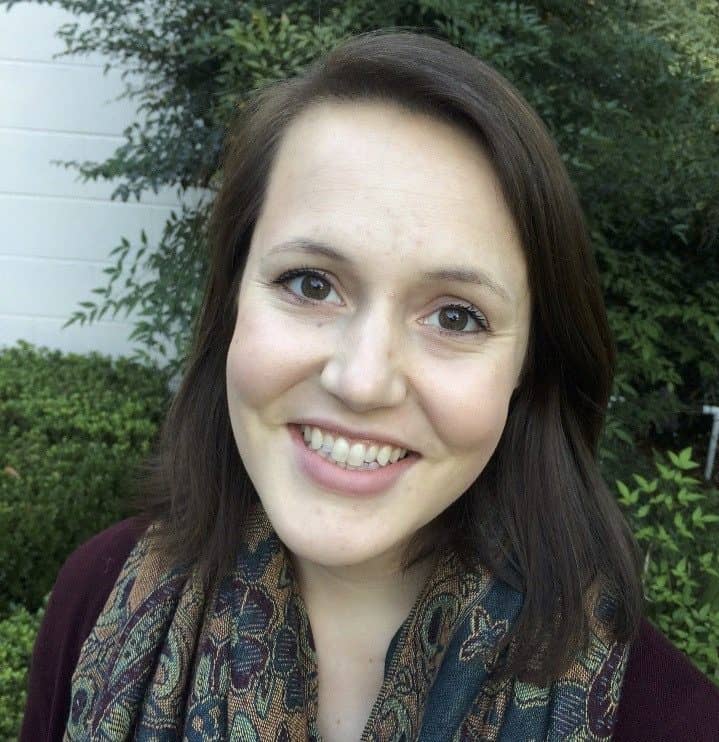
Kelly Hill serves as a Content Writer at World Relief’s home office. She previously served as Volunteer Services Manager at World Relief Triad in North Carolina before moving to Salt Lake City. With a background in International and Intercultural Communication, she is passionate about the power of story to connect people of diverse experiences.
Ali’s Story: A Refugee Pharmacist Using His Career to Give Back to Others
In 2010, a man named Ali AlQaisi arrived to the U.S. as a refugee from Iraq. At home in Baghdad, he had worked as a pharmacist. But when he and his family arrived to the United States, he faced the challenge of starting over entirely. He had to rebuild his life. He had to restart his career.
But the journey to gaining his credentials and returning to the health sector would not be an easy one.
The challenges could be easy to overlook In 2022, Ali is a clinical specialist with CVS Health and is board certified in geriatric pharmacy. By any standard, his is a story of massive success. He even won a 2021 Paragon Award, a recognition from Omicron of CVS Health that is “granted to an exceptional employee who best embodies the company’s values, is a model of excellence, and lives its purpose every day.”
But Ali is not just excelling in his career. Part of his mission is to help others in his community…so that all can succeed! One way he does that is by tutoring immigrant medical professionals preparing for pharmacy exams. Each person must pass the exam to practice in the United States, but this can be challenging to manage in a new language while working to support a family and navigating a new cultural environment. Ali walks with other immigrants as they study, and he helps connect them with internship and job opportunities so that they can grow in their careers.
“I know what an overwhelming experience it is to start over in a new country. If I can help ease the transition of one refugee, it is worth it.”
Ali AlQaisi, a refugee from Iraq
Hear Ali share more of his story below.
Fleeing Violence in Search of Hope
My family and I left our hometown in 2006 due to sectarian violence. This violence hits very close because I lost my dad to it. We left the country and went to Lebanon where we registered as a refugee with the United Nations. We waited there for four years and in 2010, we came to the United States.
I arrived here with my wife, my seven-month-old son, my mom, and my younger brother.
I can recall that day as the happiest day in our lives. It was also a day full of uncertainty and fear. As like with many other refugees, our main struggle was the language barrier, cultural gap, and adapting to the new system in the United States. When I say the new system, I mean every single detail in our daily life is a struggle for the immigrant and the new arrival.
When I came here, I was 30 years old, and I did not know how to get groceries or baby formula for my son.
I felt incapable of taking care of myself and my family. I look back and have no idea how we could have made it without the help and support we received from World Relief. World Relief was there from the first day as they waited for us at the airport. They provided us with everything we needed to settle down and they guided us step by step.
They provided ESL classes, helped us find jobs, they connected us with a community of well-established families and volunteers, and helped us adapt to the system.
A Career Pathway Back to Pharmacy
Our first year here, I worked in a factory. I was so happy and grateful to provide for my family while I was navigating a very complicated healthcare system in order to transfer my license as a pharmacist. Back then I did not know any foreign pharmacists who had gone through the same process, and this made it very challenging. I did not know how to start. I did not know when to start.
In June 2011, we had our second baby. At that time, I was preparing to take my first exam and I was so terrified and scared to fail that exam because the exam cost $800. I could not afford to lose $800 if I failed the exam, but my wife encouraged and supported me to take it. I took the exam and passed it. We were so determined to succeed. We did all that we could.
The first couple of years in the United States, we did not have a social life. We would work, study, and prepare to take exams. I worked seven days a week and studied for the exam. My wife took care of the kids and worked a part-time job while she was preparing to take exams.
In the beginning of 2014, I became a registered pharmacist in the state of Illinois. Today, I am a licensed pharmacist in 11 states and a board-certified specialist in geriatric pharmacy. My wife is a hospital pharmacy manager. We are blessed with three kids.
Giving Back as a Pharmacist
Since the first day our struggle ended, we made a commitment to support new arrivals and refugees on their journey.
My story is a great example of when you are helping an individual, you are not just helping one person, but you are helping the community. It has an exponential impact.
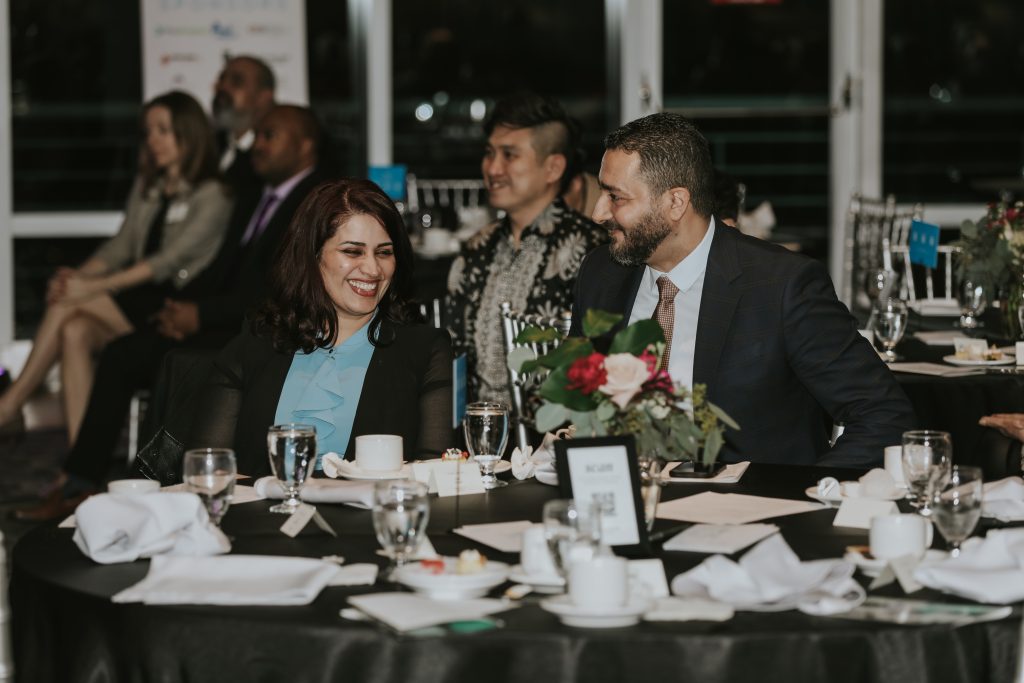
Leading From Where You Are
Ali demonstrates what it means to lead from where you are. He is actively engaged in the Chicagoland community using his professional expertise to help newly arriving refugees navigate the American health system, ensure they attend medical appointments, and reduce language and cultural barriers to support adherence to their treatment plan. And by supporting others in their careers, he is helping build a stronger community.
He is creating lasting change.
Continue reading:
5 Ways You Can Lead in Your Community
Partner Spotlight: Greg & Olivia Evans on “Who is my neighbor?”
How You Can Lead from Where You Are

Leadership reflection from World Relief Chicagoland Executive Director Susan Sperry.
At World Relief, we regularly say that we want to create communities of love and welcome. I believe that this is an important vision. In fact, it’s a guiding idea that has motivated much of my own decision-making and sense of calling in my life and career spent serving at World Relief. And I think this vision reflects beautiful biblical values that remind us of God’s heart for how Christians can engage with immigrants and refugees.
“For I was a stranger, and you welcomed me,” Jesus tells us in Matthew 25:35.
Yet as I ponder this vision and what it looks like practically for each of us, there is a quote from Dietrich Bonhoeffer that challenges the way I apply this vision to my life and thinking.
“The person who loves their dream of community will destroy community, but the person who loves those around them will create community.”
― Dietrich Bonhoeffer, Life Together: The Classic Exploration of Christian Community
When we put these wise words in conversation with our vision to create communities of love and welcome, I believe we are left with an invitation: an invitation to lead and to steward.
Leadership & Stewardship
Bonhoeffer gives us a “reality check” opportunity by reminding us that our big, inspirational ideas about what community should look like matter far, far less than how we actually treat those around us. Building community is not about the headline moments, but more about small, faithful actions to serve those around us. Instead, what if we complete many small actions to serve those around us?
World Relief’s mission is to equip the Church, as well as like-minded community members, to serve those in vulnerable situations. And this is a strength, I believe, because it means we open doors for you to lead from where you are. And that is an invitation to stewardship. Stewardship of relationships, time, finances, and even opportunities. That is why, when World Relief asks you to consider what you can do to help create welcoming communities, we believe that response varies person by person. And we each have a role to play!
People Leading in their Sphere
Every day, I’m amazed at the creative ways that members of my community step up in leadership. For some, this can be a bold step of faith to do something new. For others, it’s using the platform or position they have been given. I’m inspired by leaders young and old from all walks of life who choose to be part of a change.
We’ve seen…
- Sunday school teachers leading from Scripture with lessons about God’s heart for immigrants and refugees
- College students organizing their friends on campus to write letters to political representatives to advocate for DACA recipients
- Children running lemonade stands to raise funds for their new neighbors from Afghanistan.
- Refugees welcomed by World Relief returning as volunteers to help others
- Individuals researching the needs of immigrants in Chicago so that they can give strategically
- Groups from local churches coming together to form a team to walk alongside a recently-arrived refugee family
- And so many others!
Each of these examples became part of creating a community of love and welcome. And they did it by asking a question.
“What does it look like to faithfully serve those around me? How can I lead by serving the people who are my neighbors?”
Our Call
I want to challenge each of us to think about leadership not only as a position. Instead, as an invitation that anyone can accept.
With that mindset in place, what if we asked ourselves, “What does it mean for me to lead in creating lasting change where God has me right now?”
Continue Reading
Partner Spotlight: Greg & Olivia Evans on “Who is my neighbor?”
Video: We Believe the Church Can Change the World
A Reflection During Volunteer Appreciation Month
A Reflection During Volunteer Appreciation Month
By Rachel Wassink, Volunteer Mobilization Manager at World Relief Chicagoland.
Along with the coming of spring and the celebration of Easter, April is when World Relief celebrates National Volunteer Appreciation week. A week when we recognize the profound impact of volunteers and the lasting change they bring to our communities.
Volunteers have walked alongside refugees and other immigrants through changes and challenges, but they have not lost hope. They know that creating change that lasts isn’t easy, but it’s possible when we move together.
What I’ve Seen
Over the past four years, I have had the joy of working with volunteers serving across Chicagoland in a variety of opportunities like Friendship Partners, Youth Tutors, Transportation Assistants, and more. I have seen volunteers give their time, resources, creativity, and expertise. All while maintaining a posture of humility and curiosity as they learn from our neighbors.
Amidst changes like COVID-19 and the surge of Afghan arrivals this past fall, volunteers have shown unwavering support. Their steadfast presence has been a constant encouragement to me as we move forward together.
One Volunteer’s Impact
There are unending stories I could share of how volunteers have made a lasting change. But there’s one that’s been at the front of my mind lately as I see buds on the trees bursting and daffodils sprouting up through the ground.
A family arrived in the spring of 2020 at the beginning of the pandemic. Soon they were matched virtually with a Friendship Partner volunteer. The family mentioned that one of their goals was to start a garden so they could have fresh food and be reminded of their garden back home. Over video calls and through a language difference, their Friendship Partner helped them make a list of supplies and create a plan for where to set up the garden. Their Friendship Partner collected some garden supplies from their church community and was able to drop off the supplies. Within a few days, they watched the family plant their garden virtually.
Fast forward to spring of 2021, and this Friendship Partner got to join the family outside to plant their garden once again! That simple act of service in supporting the family with their first garden bloomed into a joyful tradition.
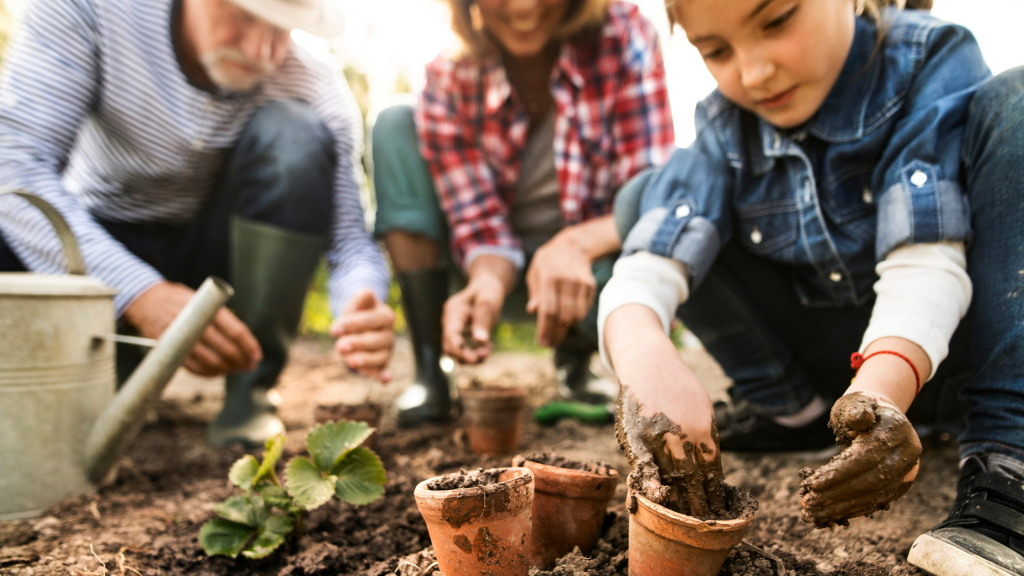
You can make a difference
Volunteers walk alongside refugee and immigrant neighbors in dozens of small and big ways. Creating change that lasts, and we are so thankful for each and every volunteer. From gardening to navigating new systems to sharing a cup of tea, volunteers show up and make a difference.
To our volunteers that have been along for the journey – thank you for your generous service. And to those not yet on the team – you too can be part of this community of volunteers moving forward together in welcoming our neighbors and making change that lasts.
Read more about the impact of volunteers and how ordinary moments create a movement of change in our Year In Review: 2021 Year in Review | World Relief Chicagoland Annual Report
Finally, I’m Home: Raphael’s Story of 8 Years Waiting for Resettlement
“Anything can happen and your future is over…after years of war, it was hopeless.”
Meet Raphael
Growing up in the Democratic Republic of Congo, Raphael was the youngest brother of five older sisters. Together with his family of sisters and a single mother, Raphael was constantly uncertain about the future. Conflict in their homeland, instability, and poverty are the things that he says he doesn’t want to remember.
Waiting for Resettlement
Eventually, Raphael fled to seek a better life. He found himself in a refugee settlement in Namibia, where he applied for asylum again and again in different countries. Just waiting to find a place to call home. Waiting for resettlement.
“The thought of saying one day I wish I could be an American…I could not even dream of it because it was impossible. It couldn’t come to be, so why dream of it? And then, all of a sudden, there is this new door that is just opened for you.”
Raphael, a refugee who was granted entry to the U.S. in 2018
After eight years of waiting, Raphael was granted entry into the United States in May 2018. With World Relief, he set out to begin a new life.
Watch the video below to hear Raphael share about his experience of being a refugee and gaining the opportunity to come to the United States… building relationships with staff and volunteers along the way.
Resettling Refugees for More than 40 Years
For more than 40 years, World Relief has partnered with volunteers from the community to welcome and serve immigrants and refugees across the Chicago area. Together, we have helped thousands of refugees like Raphael achieve stability and work toward a future they may not have dreamed was possible.
You can help welcome refugees like Raphael by applying to volunteer with World Relief Chicagoland today. Take the next step toward building relationships and being part of “welcome” for another refugee like Raphael.
Watch other stories of transformation on World Relief Chicagoland’s YouTube channel!
More like this:
New Opportunity in the U.S.: Jenny’s Story
I Was No Longer Safe in My Country: Yomardy’s Story of Seeking Asylum
Cozy Recipes for Winter from 5 Different Cultures
It’s February, and for those of us in Chicago, that means frigid winter temperatures. Winter means brisk walks breathing in the cold winter air and snow days spent bundled up indoors. These cold, dark months feel like the perfect excuse to get cozy.
And when I think of cozy, I think of hot drinks. I think of comforting foods that warm me up on a cold day. Chicago is a diverse and culturally rich city. Thankfully, that means a plethora of options when it comes to cold weather comfort food from dozens of cultural traditions. And at World Relief Chicagoland, we are all about celebrating that diversity. We serve families and individuals from dozens of countries with unique cultures and histories. In my opinion, one of the best parts of this is learning about and experiencing new foods and customs.
This roundup of recipes brings you delicious soups and stews from across the globe. Each is written by a cook from different background and is a unique expression their creativity and culture.
Why not test out one of the recipes below today?
Recipes for Cozying Up this Winter
Creamy Vegan Ramen Noodles
Recipe by Joanne Molinaro
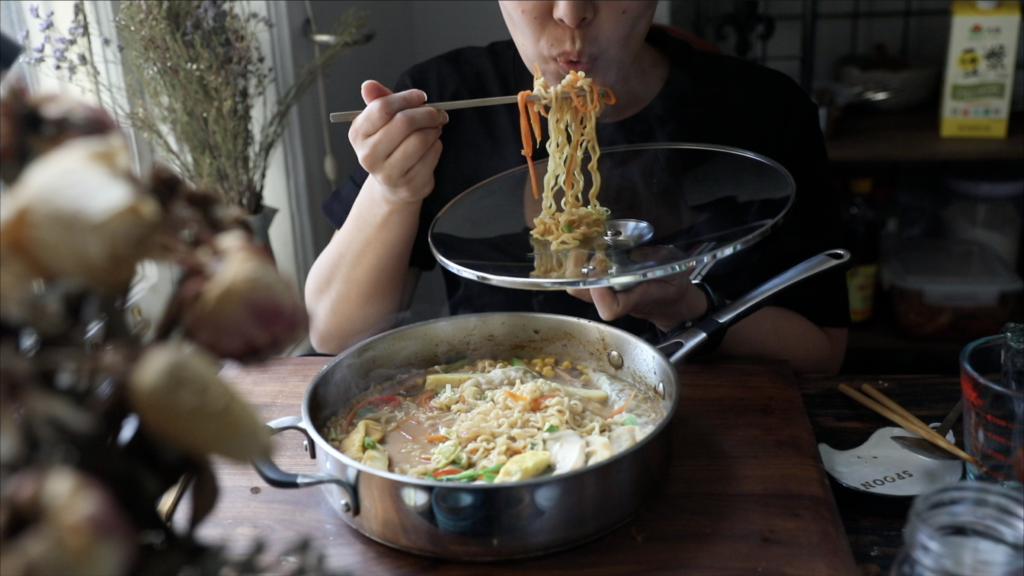
Author of The Korean Vegan cookbook, Joanne Molinaro started her food blog in 2016 when she turned to a plant-based diet. But it was after going viral on TikTok during the COVID-19 pandemic that she pivoted full-time to creating recipe videos. Today, she creates 60-second videos and blogs of vegan recipes of Korean food while sharing stories about her family – immigrants from what is now North Korea.
This ramen (or “lah-myun” in Korean) recipe puts a vegan spin on a popular trend. On TikTok, cooks make ramen rich and creamy by adding egg and mayonnaise to a bowl of ramen. In this vegan version, Korean soy milk and doenjang (fermented soybean paste) lend the same level of creaminess. With tons of vegetables, soy sauce, tofu, and noodles, just a few minutes create a spicy and satisfying noodle soup.
Seco de Chivo (Goat Stew)
Recipe by Layla Pujol
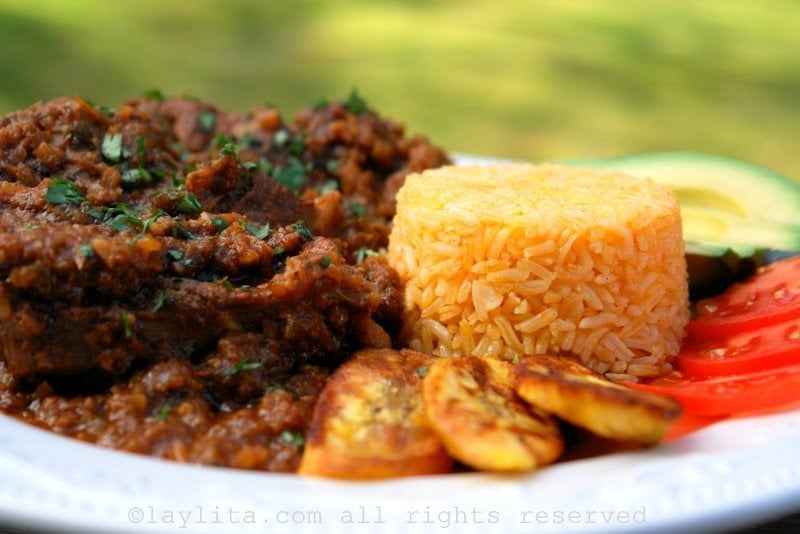
Cook Layla Pujol, who goes by Laylita, was born in Ecuador before moving to the U.S. and now living in Luxembourg. Her blog is full of recipes for the Ecuadorian dishes she grew up eating, but it also introduces readers to foods from across Latin America. Laylita draws on inspiration from family and friends cooking and eating across the world and celebrates Latin American culture as well as culinary tradition.
Seco de chivo, or goat stew, is a recipe for celebration! Laylita’s community prepared it only for fiestas when she was growing up. With tender goat meat and a sauce made with flavors like garlic, cumin, achiote, oregano, cilantro, and a fermented corn drink, this hearty goat stew can also be served with rice, fried plantains, or avocado!
Borscht
Recipe by Natasha Kravchuk

Natasha Kravchuk arrived to the U.S. with her family as a refugee at only four years old. When they left their home of Ukraine, the family knew no English at all – but they were committed to becoming part of their new community. Today, Natasha and her husband Vadim make videos and blogs of their recipes on Natasha’s Kitchen. There, she shares well-loved recipes – many of which come from family and friends – and include many from Russia and Ukraine.
Beets make borscht, a nutritious and delicious soup full of beans, potatoes, carrots, and cabbage, a striking red color. Full of vegetables and served with a dollop of sour cream on top, borscht is a classic dish in Ukraine and perfect for cold winter months. Just be careful to not stain your hands red with beets in the process!
Kadhi
Recipe by Priya Krishna

One of my favorite food writers is Priya Krishna, currently with The New York Times. She calls her cookbook Indian-ish a loving tribute to her mom’s cooking – Indian-American hybrids that are “easy to make, clever, practical, and packed with flavor.”
Her Kadhi recipe for Bon Appetit is all about being simple to make but full of complex flavor – what she describes as “a cozy blanket draped over a hot bowl of white rice.” The recipe comes in many variations across regions in India, and this version is full of spices and tinted the distinctive yellow color of turmeric.
Red Red Vegan Bean Stew
Recipe by Zoe Adjonyoh
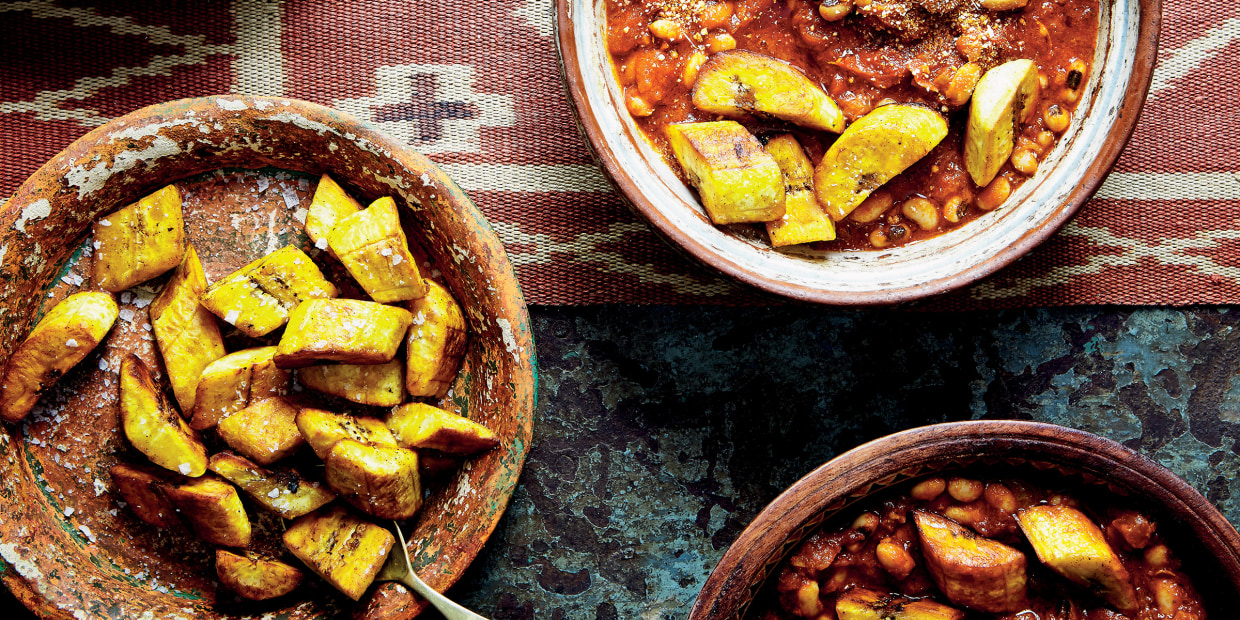
In 2010, Zoe Adjonyoh started on a mission to “bring African foods to the masses.” Today, she is a recipe creator and ambassador for “New African Cuisine” and author of a popular cookbook called “Zoe’s Ghana Kitchen.”
She sees food as a powerful tool – a “bridge between cultures” that was also a way that she connected to her own family history in Ghana while growing up as the child of immigrants.
Recipes like this “Red Red Vegan Bean Stew” are a delicious way to learn a little bit about Ghana too! This stew made of black-eyed peas cooked in spiced tomato sauce is a meal eaten any time of day in Ghana. It’s a tasty, healthy, nourishing, and comforting food that is equally easy to make! To go the extra mile, serve with fried plantain on the side.
Cook and Eat!
These recipes bring flavors from countries across the globe as their creators blend old traditions with new techniques and their own spin. If you try any of these recipes, why not share some with a friend or neighbor? Or ask someone in your community to teach you how to cook their favorite food! If you do, post a photo on social media and be sure to tag World Relief Chicagoland. We can’t wait to see your culinary masterpiece!
Continue Reading
4 Resources From World Relief Staff That Have Shaped Their Journey: MLK Day
Watch this Family Reunite After 9 Years Apart
Why Family Reunification is Needed
Can you imagine fleeing your home? And not just leaving behind your community. Becoming separated from your family too.
Sadly, the circumstances that push refugees from their homes often separate families. And this creates countless hardships. Sometimes there are tragic consequences. The loss has a lasting emotional impact that affects other areas of life. In other words, it can prevent families from integrating into their new communities.
Thankfully, the United Nations refugee agency (UNHCR) sees family as a primary community, for every person. Because of that, UNHCR prioritizes family. Together, UNHCR and organizations like World Relief work to reunite husbands and wives, bring together parents and children, and connect children with their siblings. Above all, to restore relationships.
UNHCR promotes family reunification to protect and preserve the unity of this fundamental unit of society, to restore basic dignity to a refugee’s life, and especially to provide protection for children…
UNHCR
The Barriers to Reunification
However, the journey can be long. And it’s challenging. There is often an extensive waiting period after someone submits their application. Loss of formal documents can make it difficult for families to prove their relationships. Additionally, it can be expensive. Airfares, legal fees, and other costs add up. It can end up being thousands of dollars that families can’t afford. Beyond those costs, it can be hard to find affordable legal advice. Because of that, too many families go years without seeing each other.
But there is hope.
How World Relief Reunites Families
Every year, World Relief works to bring families back together. By providing free or affordable legal help, staff walk families through the whole process. First, staff can evaluate the case for reunification. Then help with submitting the application. They can sift through the required documentation. Then case managers can help with resettlement details. Finally, World Relief volunteers can even provide a ride to the airport. All of this can take years!
But it’s worth it to bring families back together.
Then when they are, it’s always an emotional experience.
Watch the video below to see one family’s emotional reunion at the airport.
Watch more videos of hope on World Relief Chicagoland’s YouTube channel!
More like this:
New Opportunity in the U.S.: Jenny’s Story
I Was No Longer Safe in My Country: Yomardy’s Story of Seeking Asylum

